23 Best High-Protein Cheeses You Can Eat
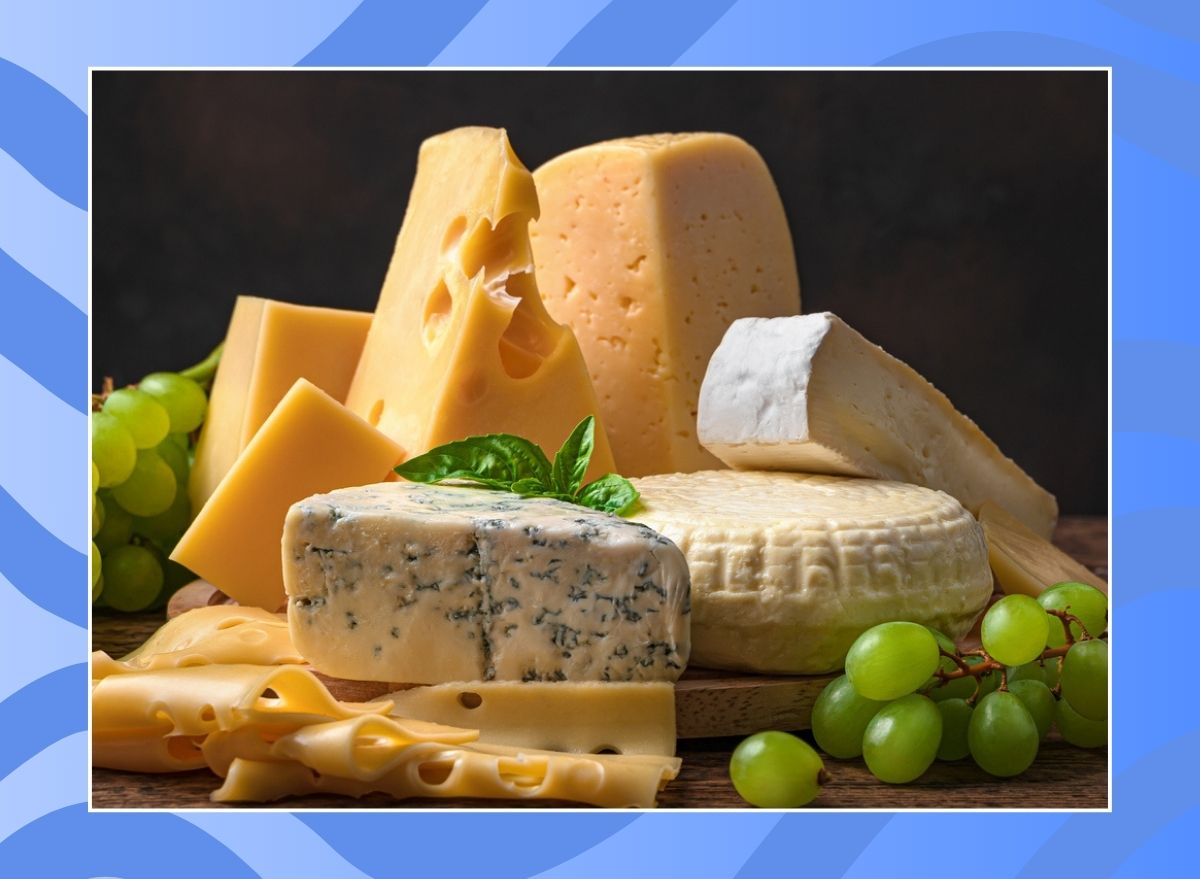
Most people would agree that life is better with cheese in it. Whether you're enjoying a perfectly built charcuterie spread and a glass of wine, indulging in a cozy grilled cheese sandwich, or snacking on a few bites with crackers, cheese has a way of making any day a little brighter. And while cheese does come with a higher fat and calorie count, it's also packed with protein—a key nutrient found in dairy that makes cheese a valuable addition to many healthy eating plans. But just how much protein is in your favorite type of cheese?
All cheese does contain protein, but the amount varies across types, with options like cottage cheese, ricotta, provolone, and Swiss having some of the highest levels per serving. Protein provides your body with a ton of amazing benefits, so incorporating high-protein cheeses into your diet can help you enjoy perks like weight loss, reduced cravings, and lean muscle maintenance.
Read on to see how much protein is in all of your favorite types of cheese, ranked from highest to lowest amount of protein. Then, check out 25 Ways to Eat More Protein at Every Meal.
Cottage cheese

Protein per 1/2 cup: 14 grams
Slightly similar to ricotta in texture, cottage cheese has the most protein in cheese (and the biggest serving size). While its tastiness is hotly debated—you tend to either love it or hate it—the health benefits are clear.
Ricotta
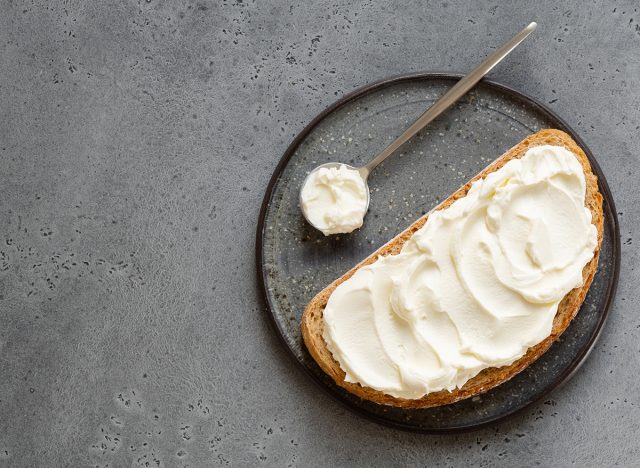
Protein per 1/2 cup: 9.4 grams
Coming in at around 9 grams of protein per 1/2 cup serving, this soft, mild, high-protein cheese makes any dish supremely creamy without overpowering the main ingredients. You can find it in lasagna, baked ziti, or even just spread it on toast.
Gruyere
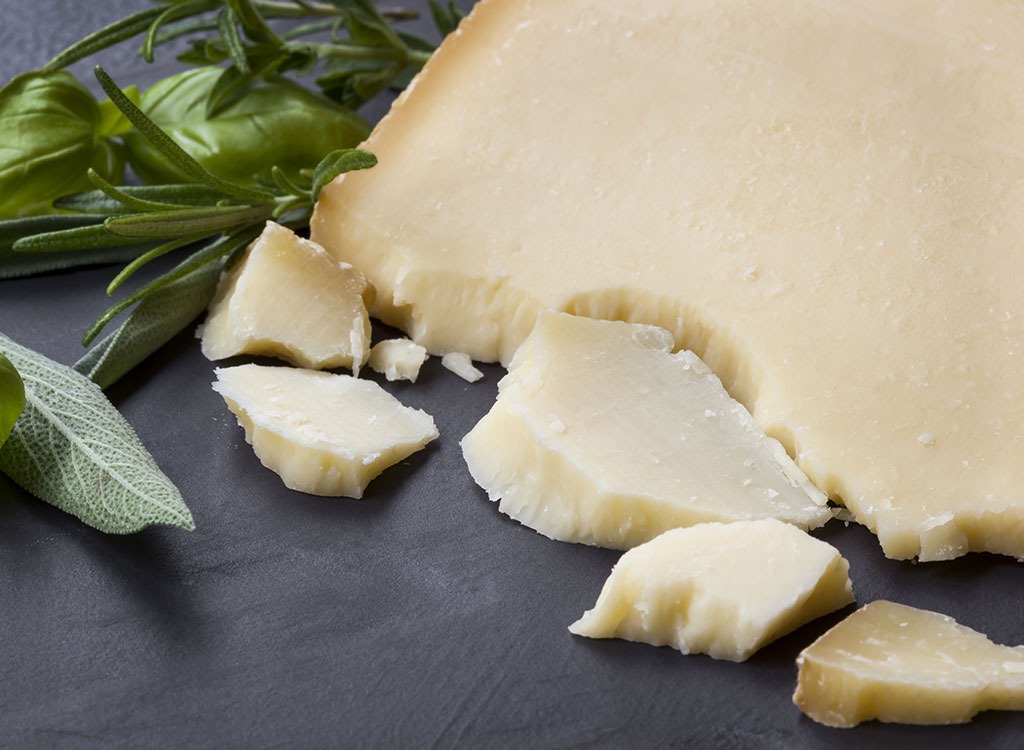
Protein per 1 ounce: 8.5 grams
Gruyere is often melted in fondues, macaroni and cheese, and grilled cheese, and for good reason. It melts down into a velvety, smooth texture and adds tons of protein. It has a mild, sweet, and salty flavor.
Parmesan
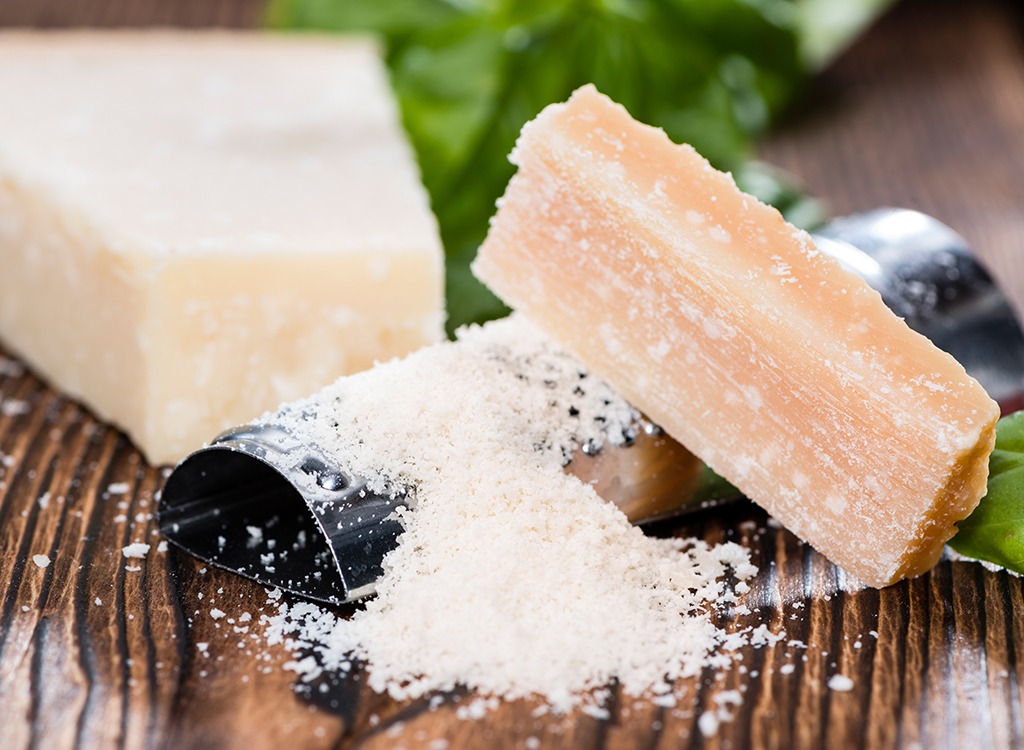
Protein per 1 ounce: 8.1 grams
Another yummy Italian cheese, parmesan, is more than just the "shaker cheese" you add to mom's spaghetti. The hard, sharp, high-protein cheese is often grated rather than eaten in chunks. Add it to your favorite roasted vegetables (we love this Parmesan-Roasted Broccoli side dish), pizza, pasta, salad, and more. You really can't go wrong.
Pecorino Romano
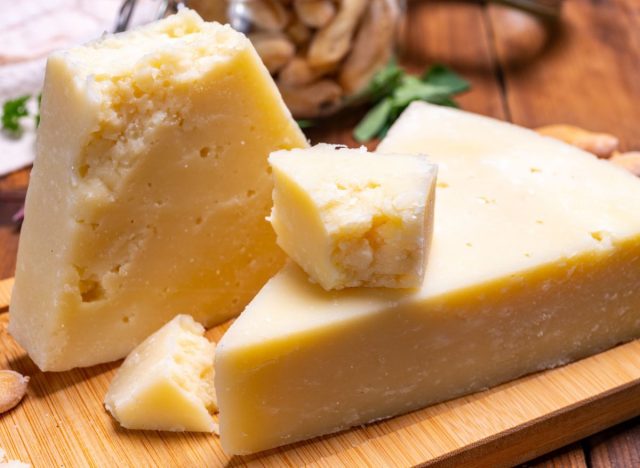
Protein per 1 ounce: 8 grams
This hard, salty cheese is packed with more protein than you might think. Because it's more of a grating cheese, you may not eat the full serving size, but it enhances the flavor of Italian dishes like no other. Add it to your favorite pasta dish or salad for even more flavor (and protein).
Swiss
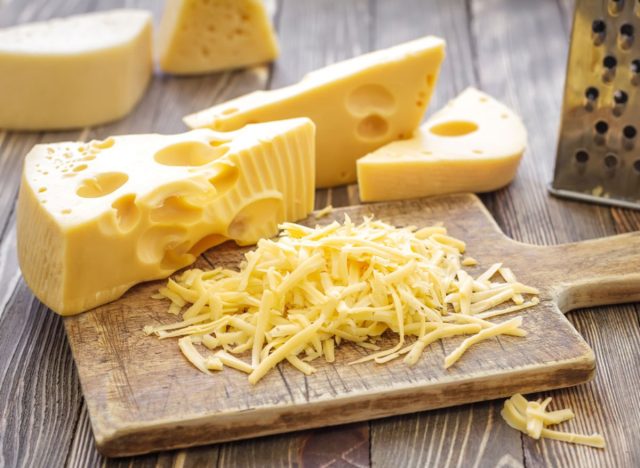
Protein per 1 ounce: 7.7 grams
Known as the "holey cheese," Swiss is super mild and goes well on sandwiches. And with almost eight grams of protein, feel free to add on another slice to your lunchtime favorite.
Provolone
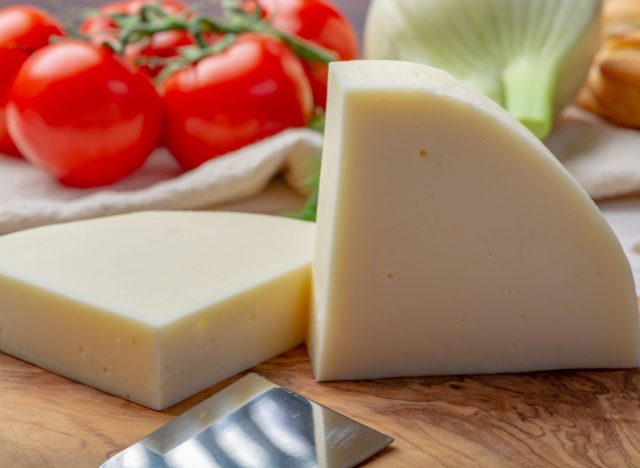
Protein per 1 ounce: 7.3 grams
Another deli favorite, mild provolone, takes on a more intense flavor when melted. Try this healthy panini with provolone, peppers, and arugula for an upgraded office lunch. And because it has over 7 grams of protein per serving, it's one of the higher-protein cheeses on the list. Try it with this Provolone, Peppers, and Arugula Panini recipe.
Fontina
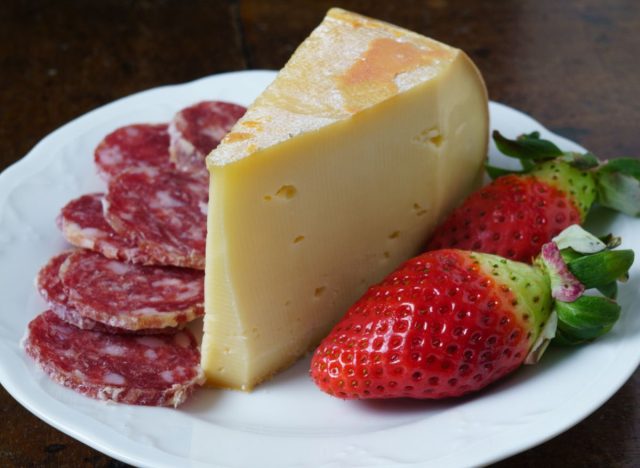
Protein per 1 ounce: 7.3 grams
A supreme melting cheese, Fontina is a decadent addition to macaroni and cheese and grilled cheese. With a little more than seven grams of protein per serving, it'll keep you full, too.
Gouda
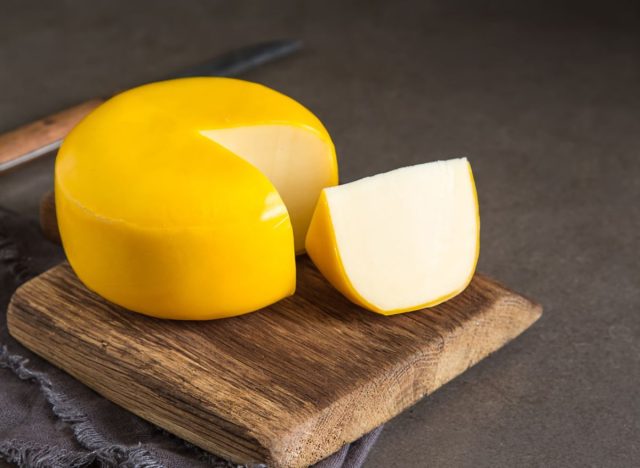
Protein per 1 ounce: 7 grams
Gouda is nutty and sweet, and the smoked varieties pair deliciously with nuts. The Dutch cheese has a waxy rind that keeps it fresh and soft. Instead of eating it on a cheese plate, try these Muffin Tin Smoked Gouda and Ham Quiches, perfect for mornings on the go.
Manchego
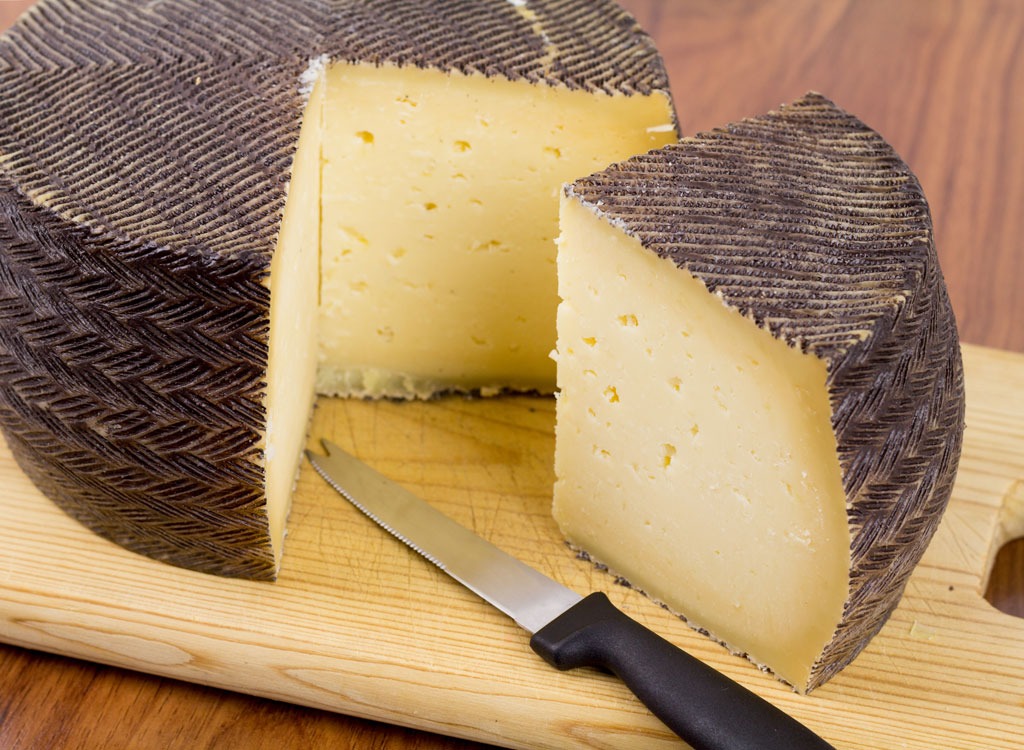
Protein per 1 ounce: 7 grams
This mild, aged, Spanish sheep-milk cheese has a hard texture and is perfect for people with lactose intolerance. It has a buttery flavor and is delicious when grated on salads, soups, or even egg dishes.
Asiago
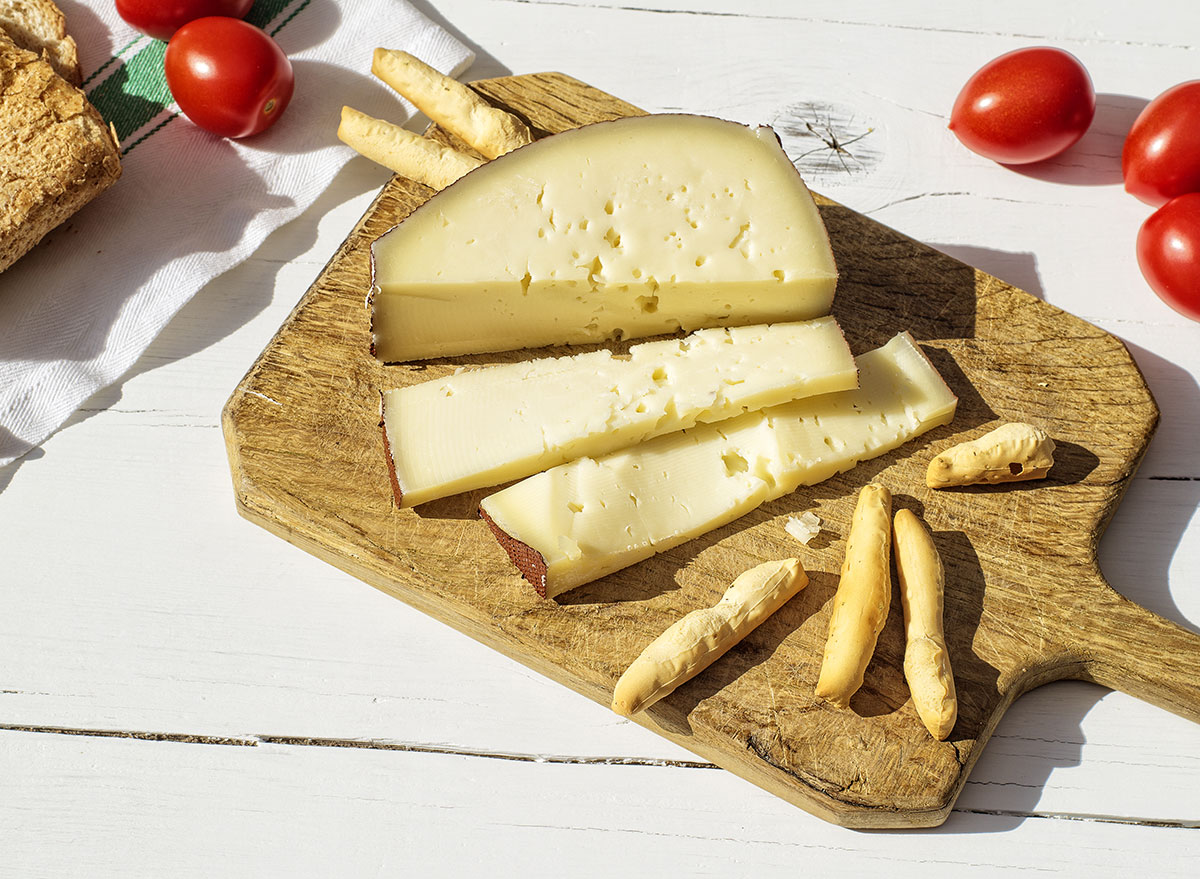
Protein per 1 ounce: 7 grams
This hard, sharp, high-protein cheese might smell like stinky feet, but it adds richness and flavor to any dish it's added to. It's often eaten aged, which is when it takes on the sharp flavor we know and love. Try it added to pasta dishes, Caesar salads, and even pizza.
Cotija
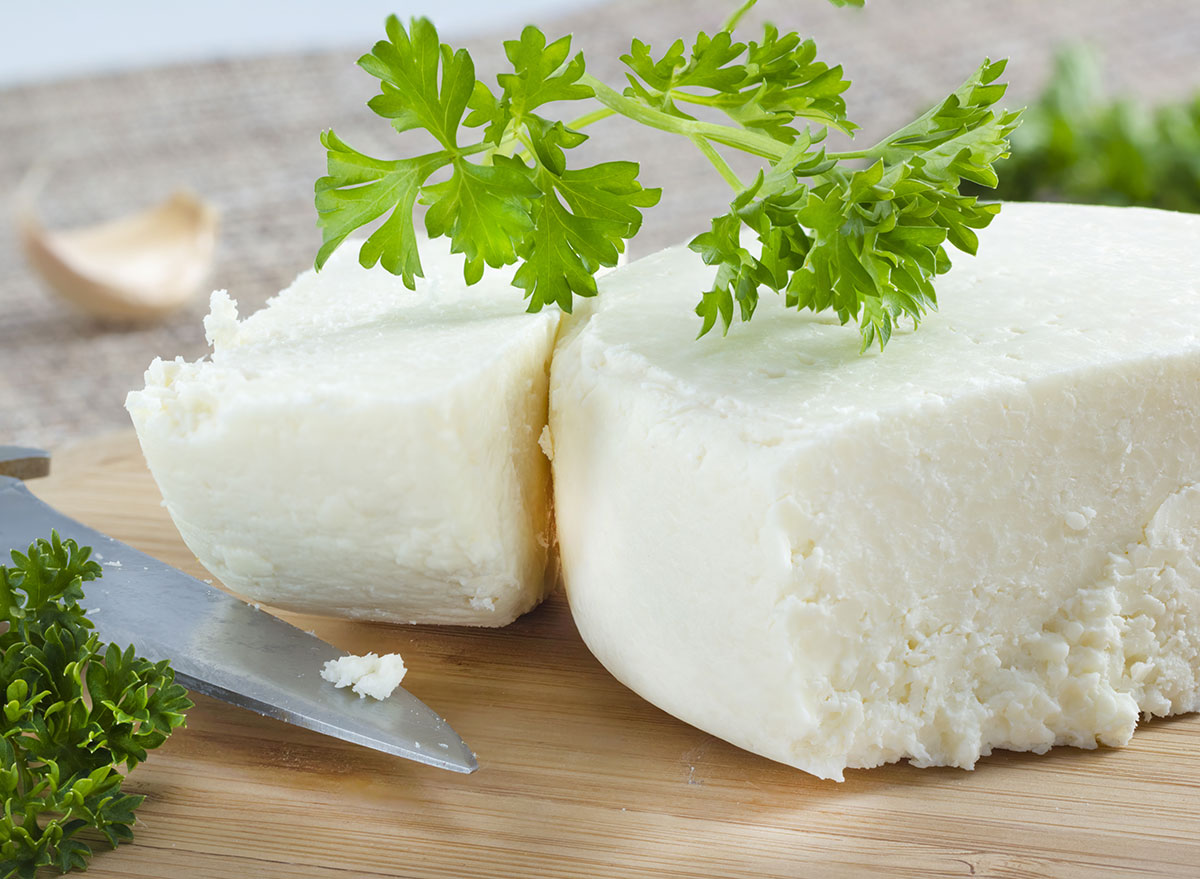
Protein per 1 ounce: 7 grams
This crumbly Mexican cheese is delicious on guacamole, carnitas tacos, and Mexican street corn. And the 7 grams of protein per serving is certainly an excuse to sprinkle on a little more.
Pepper Jack
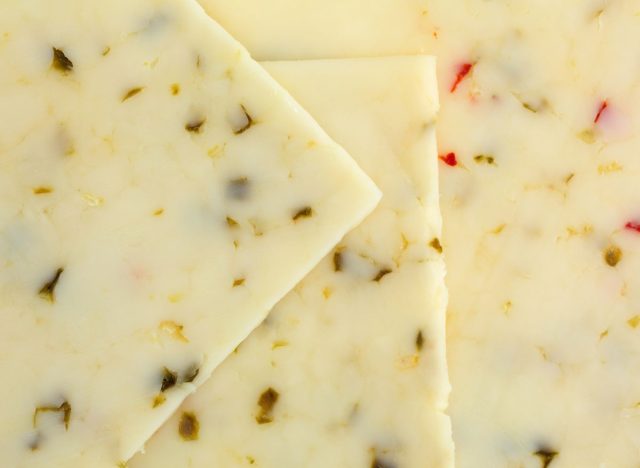
Protein per 1 ounce: 7 grams
This spicy and semi-hard cheese has flecks of sweet and hot peppers for a depth of flavor and a kick. It also holds its own on a cheese platter and tastes delicious in stuffed peppers or other South American dishes.
Muenster
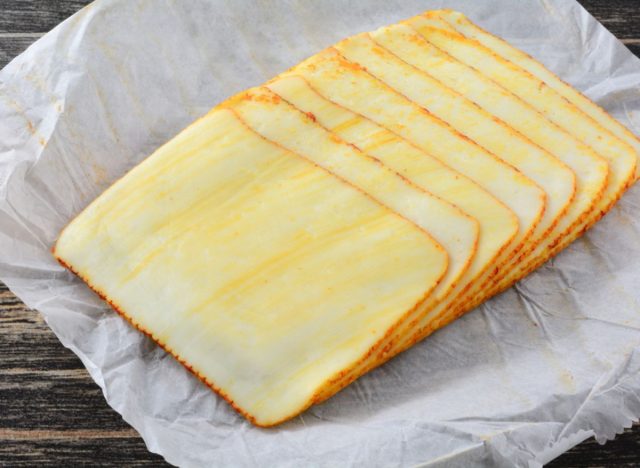
Protein per 1 ounce: 6.6 grams
This soft, smooth, and mild cheese is the American version of the French Munster cheese. Its orange rind gives it a nutty and sweet flavor. Try adding it to your favorite grilled cheese or pairing it with nuts and crackers.
Cheddar
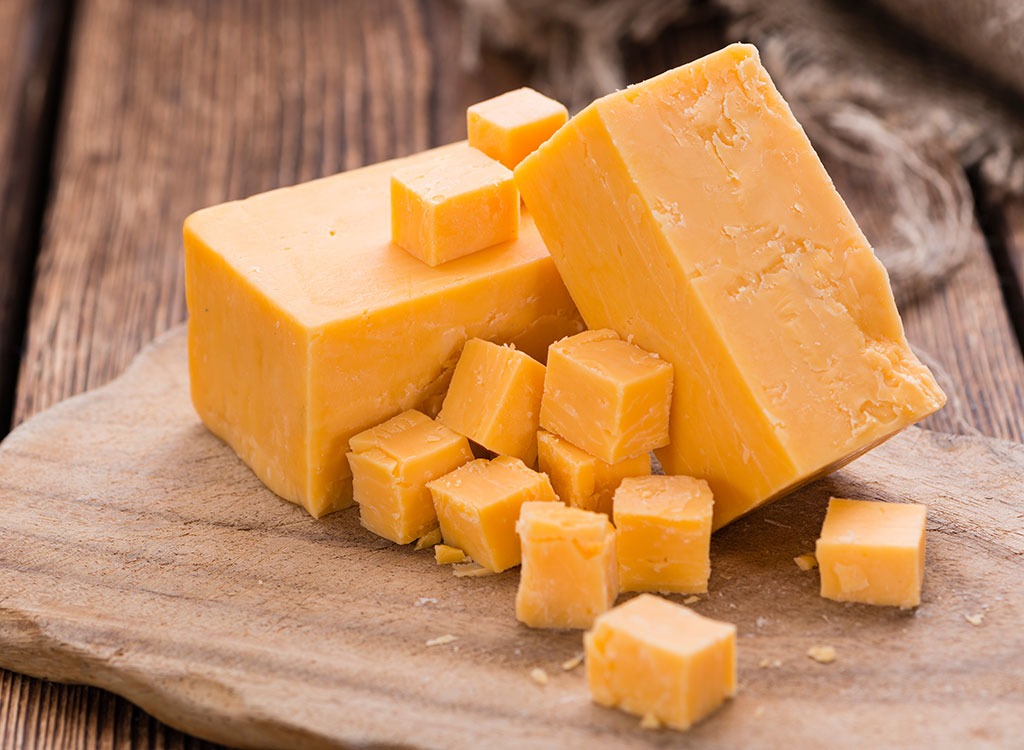
Protein per 1 ounce: 6.5 grams
Fan-favorite cheddar comes in at 6.5 grams of protein per serving. This versatile cheese is delicious in all varieties, from mild to aged. Add it to eggs, salads, casseroles, soups, and more; it's a refrigerator staple. Try this Broccoli Cheddar Soup next time you need some comfort food.
Mozzarella
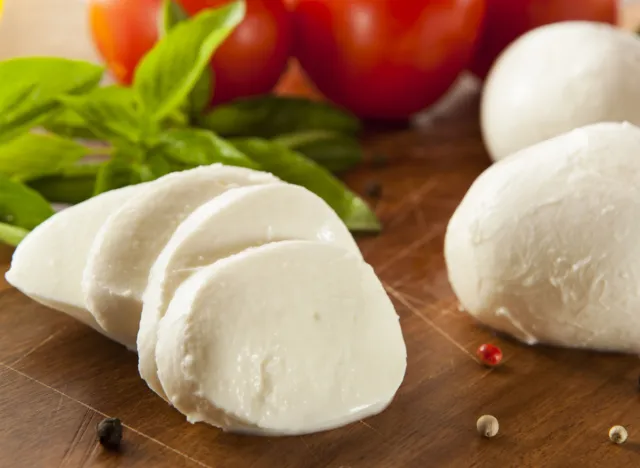
Protein per 1 ounce: 6.3 grams
Beloved mozzarella is as versatile as it is healthy. Find it in the classic caprese salad, atop pizzas, mixed into eggs, or just eaten by itself for a healthy, protein-packed snack. Next time you're hosting a get-together, make this incredible Vegetarian Mozzarella Spiedini (basically, just skewered grilled cheese and bites of hearty bread—you can't go wrong).
Gorgonzola
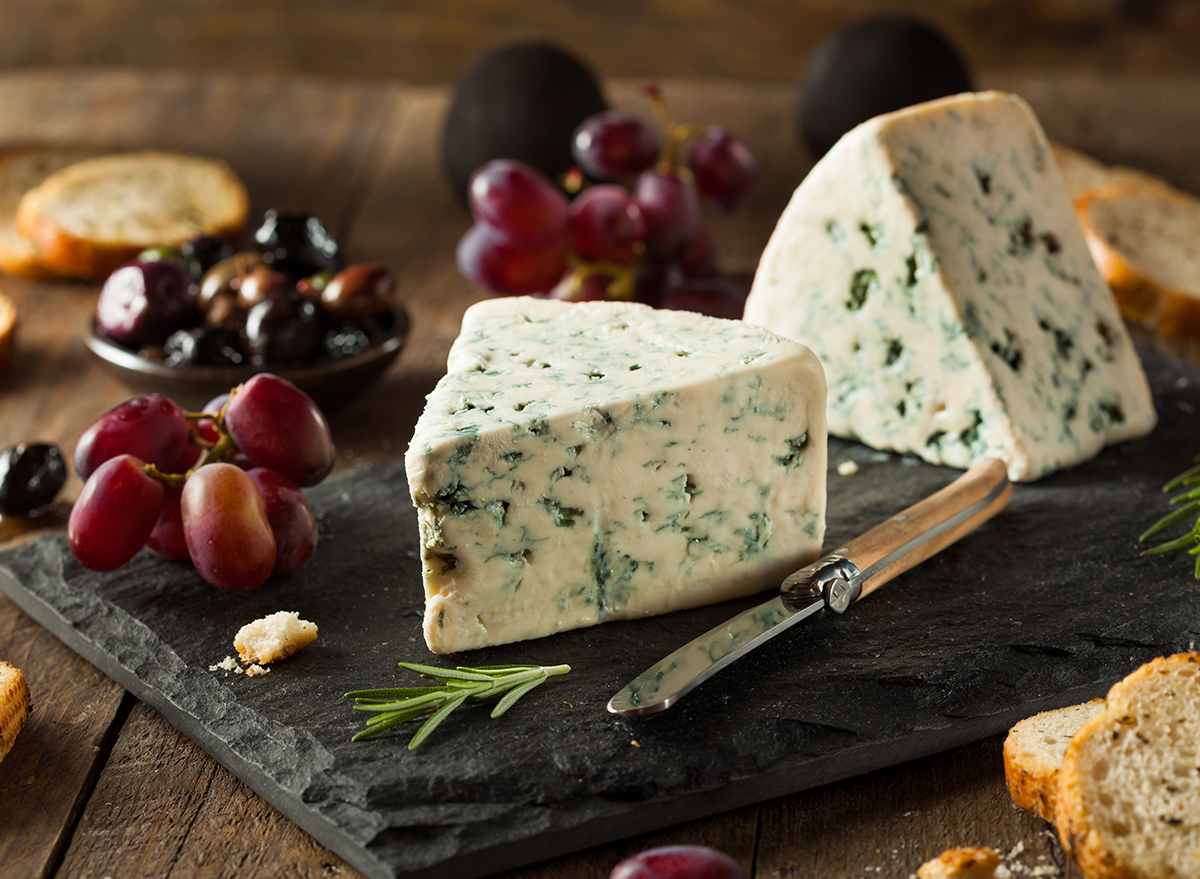
Protein per 1 ounce: 6 grams
Another tangy, dry cheese; you only need a sprinkle of gorgonzola to taste the full-bodied flavor. It pairs well with fresh fruits like figs, pears, and apples, as well as sweet jams.
Colby Jack
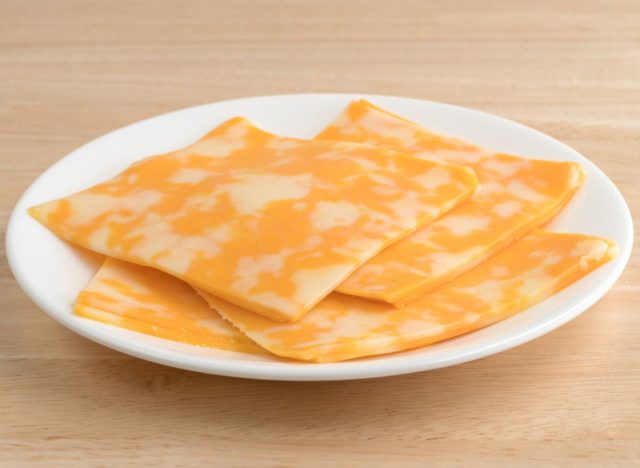
Protein per 1 ounce: 6 grams
The marriage of Colby and Monterey cheeses came together for this semi-hard deli favorite, which packs in 6 grams of protein per ounce. This cheese pairs well with pepperoni and salamis, and you can find it in fondues and plenty of Mexican dishes.
Blue Cheese
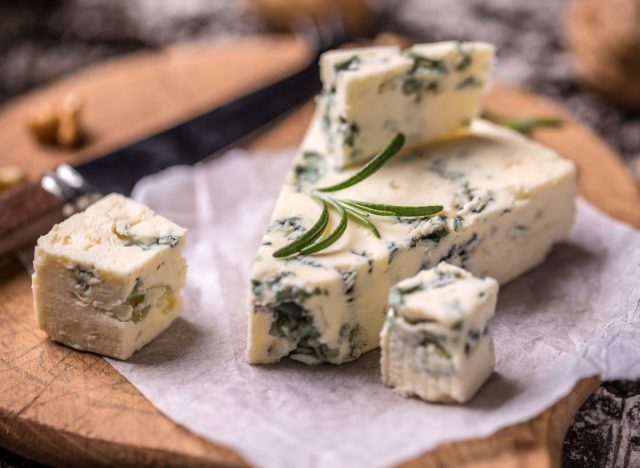
Protein per 1 ounce: 6.1 grams
Buffalo wings and blue cheese? A match made in heaven. The tangy, crumbly cheese is the perfect way to tame a spicy dish. Crumble it over a wedge salad or mix it into a blue cheese dressing for a buffalo chicken sandwich—either way, you're getting around six grams of added protein.
Brie
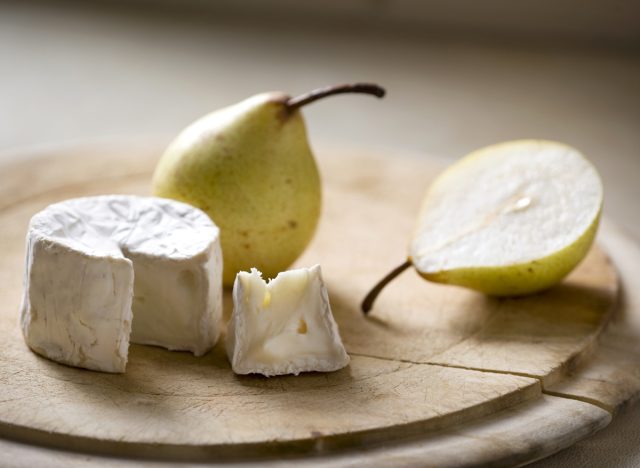
Protein per 1 ounce: 5.9 grams
Brie has around 6 grams of protein per serving and is often eaten as a standalone cheese rather than in dishes. Spread it on whole-grain bread with fig jam or on a sesame cracker to really embrace its buttery flavor.
Goat Cheese

Protein per 1 ounce: 5.2 grams
You'll likely find a log of goat cheese on any cheese board or atop a mixed green salad. Crumbly and tart, you can find garlic and herb, cranberry, and even bacon-infused varieties to spread on crackers. For a crowd-pleasing dish, try this Bacon Pizza With Caramelized Onions and Goat Cheese recipe.
American
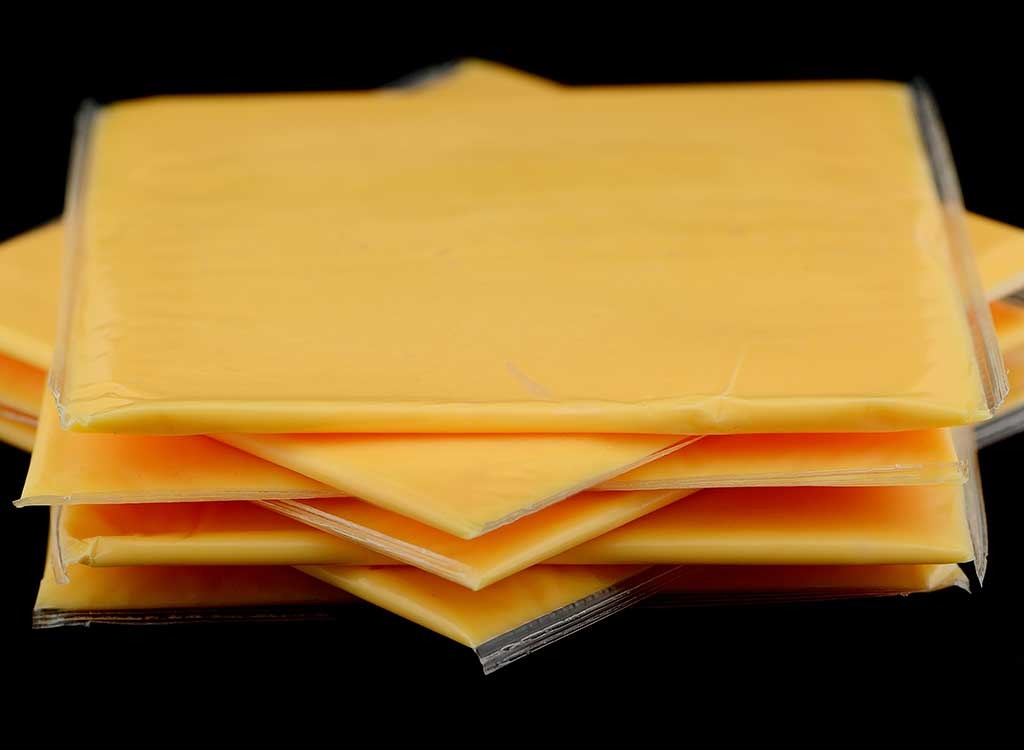
Protein per 1 slice: 4 grams
This processed cheese comes in at 4 grams of protein. Serve it up in a classic grilled cheese mixed into macaroni and cheese or on your favorite sandwich. However, because it's more processed than most cheeses on this list, eat it sparingly.
Feta
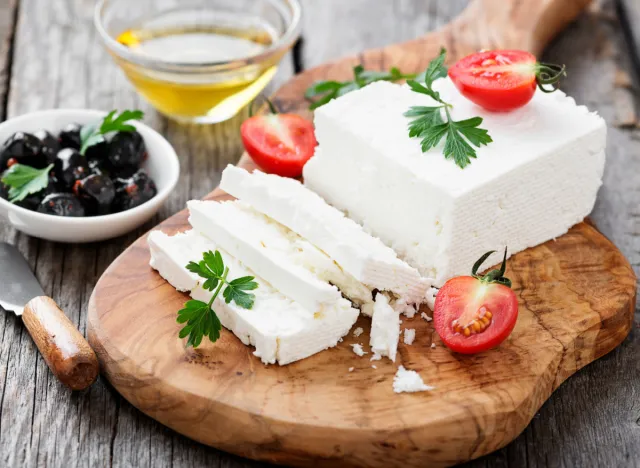
Protein per ounce: 4 grams
This crumbly Greek cheese is sharp and pungent, pairing perfectly with sweeter salads to add protein and depth of flavor. It's also yummy, sprinkled over top of shawarma or mixed into eggs. In fact, you can add this savory Artichoke and Feta Quiche to your breakfast recipe arsenal to really enjoy it.
- Source: https://fdc.nal.usda.gov/fdc-app.html#/food-details/173417/nutrients
- Source: https://fdc.nal.usda.gov/fdc-app.html#/food-details/170851/nutrients
- Source: https://fdc.nal.usda.gov/fdc-app.html#/food-details/171242/nutrients
- Source: https://fdc.nal.usda.gov/fdc-app.html#/food-details/171247/nutrients
- Source: https://fdc.nal.usda.gov/fdc-app.html#/food-details/362372/nutrients
- Source: https://fdc.nal.usda.gov/fdc-app.html#/food-details/171251/nutrients
- Source: https://fdc.nal.usda.gov/fdc-app.html#/food-details/170850/nutrients
- Source: https://fdc.nal.usda.gov/fdc-app.html#/food-details/170843/nutrients
- Source: https://fdc.nal.usda.gov/fdc-app.html#/food-details/2596662/nutrients
- Source: https://fdc.nal.usda.gov/fdc-app.html#/food-details/2640716/nutrients
- Source: https://fdc.nal.usda.gov/fdc-app.html#/food-details/399075/nutrients
- Source: https://fdc.nal.usda.gov/fdc-app.html#/food-details/805673/nutrients
- Source: https://fdc.nal.usda.gov/fdc-app.html#/food-details/171245/nutrients
- Source: https://fdc.nal.usda.gov/fdc-app.html#/food-details/173414/nutrients
- Source: https://fdc.nal.usda.gov/fdc-app.html#/food-details/170845/nutrients
- Source: https://fdc.nal.usda.gov/fdc-app.html#/food-details/713260/nutrients
- Source: https://fdc.nal.usda.gov/fdc-app.html#/food-details/403041/nutrients
- Source: https://fdc.nal.usda.gov/fdc-app.html#/food-details/172175/nutrients
- Source: https://fdc.nal.usda.gov/fdc-app.html#/food-details/172177/nutrients
- Source: https://fdc.nal.usda.gov/fdc-app.html#/food-details/173435/nutrients
- Source: https://fdc.nal.usda.gov/fdc-app.html#/food-details/1098061/nutrients
- Source: https://fdc.nal.usda.gov/fdc-app.html#/food-details/173420/nutrients









